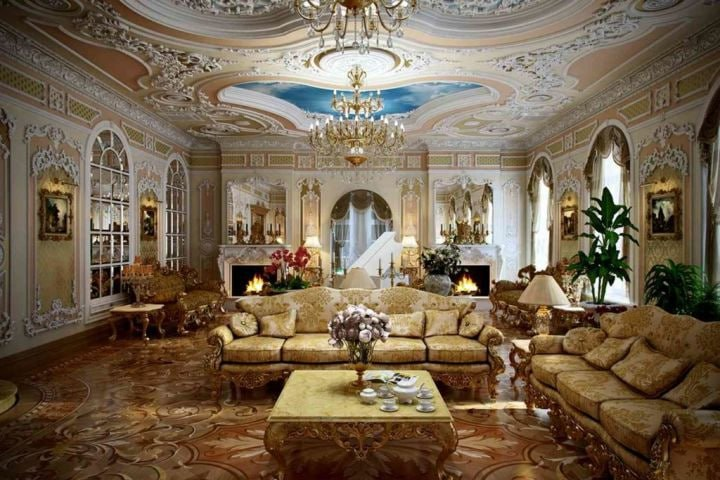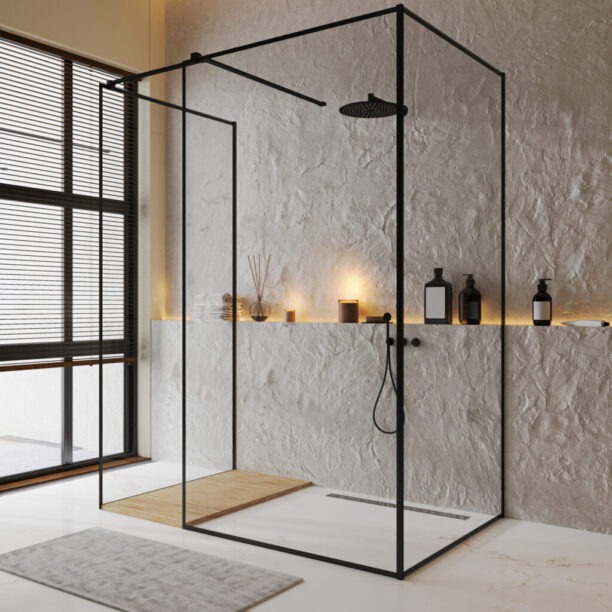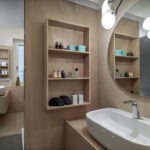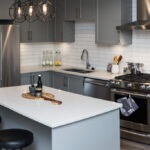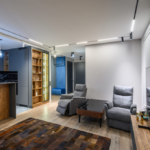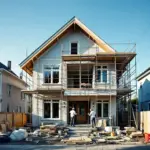Estimated reading time: 5 minutes
Table of contents
The enduring appeal of English interior design lies in its unique blend of quiet elegance, lived-in comfort, and a deep sense of history. Consequently, the style feels both grand and inviting, curated yet personal. However, this iconic look didn’t appear overnight; centuries of architectural evolution, cultural shifts, and changing tastes wove its rich tapestry.
For homeowners in Ottawa and beyond looking to bring this timeless character into their space, understanding its journey is the first step toward creating an authentic and sophisticated interior. Therefore, let’s explore the key eras that shaped this beloved style.
The Origins: Function and Fortitude
The story of English design starts long before the stately homes we picture today. Its earliest roots are in the medieval period, where function and defense were paramount.
Gothic Influence
Gothic architecture provides the style’s oldest DNA. Think of the imposing stone walls, soaring vaulted ceilings, and grand arched windows of historic castles and cathedrals. Key elements from this era include dark, heavy woods (like oak), intricate carvings, wrought iron hardware, and a focus on verticality. Ultimately, the overall feeling communicated grandeur and fortitude.
Romanesque Echoes
Pre-dating the Gothic period, the Romanesque style also left its mark. Its thick walls, rounded arches, and massive columns contributed to the sense of robust permanence found in English country manors.
The Age of Elegance: The Refined Georgian Era (c. 1714–1830)
As England grew in prosperity and global influence, tastes shifted dramatically. Specifically, the heavy, dark aesthetic of the medieval period gave way to a new desire for light, order, and classical sophistication. This was the dawn of the Georgian era, perhaps the most influential period in English design.
Wealthy young men, inspired by the classical architecture of Greece and Rome, returned from their “Grand Tour” of Europe. As a result, the Georgians embraced symmetry, proportion, and balance above all else.
Key Characteristics of Georgian Design:
- Symmetry and Order: Designers meticulously planned rooms with a focus on balance. Fireplaces were centered, for example, flanked by identical alcoves or windows.
- Light and Airy Colour Palettes: They replaced dark woods with lighter, softer colours like duck egg blue, sage green, soft grey, and cream. This created a crucial sense of space and light.
- Architectural Details: Ornate plasterwork, decorative cornices, ceiling roses, and dado rails became standard features. Furthermore, they introduced large sash windows to let in maximum natural light.
- Fine Furniture: This era produced some of the world’s most famous furniture designers, including Thomas Chippendale, George Hepplewhite, and Thomas Sheraton. Significantly, they crafted their designs to be delicate and beautiful, often using mahogany.
The Rise of Opulence: The Ornate Victorian Era (c. 1837–1901)
The Industrial Revolution and the expansion of the British Empire brought unprecedented wealth and access to exotic goods. Consequently, the restrained elegance of the Georgians was replaced by the Victorian philosophy that “more is more.”
Simply put, this era was about showcasing wealth and status. Designers filled rooms with furniture, objects, and layers of texture. It was a time of pattern, richness, and decoration.
Hallmarks of Victorian Style:
- Rich, Deep Colours: Palettes shifted to dark, dramatic hues like burgundy, forest green, navy, and deep brown. Ultimately, this created a cozy, cocooning effect.
- Pattern on Pattern: Surfaces were rarely left plain. Instead, designers used floral wallpapers, Oriental rugs, heavy velvet drapery, and patterned tiles.
- Ornate Furniture and Decor: Furniture was heavy, dark, and ornately carved. Moreover, people filled their homes with collections of objects, family photos, and decorative items, reflecting a passion for travel, science, and industry.
A Return to Craft: The Arts and Crafts Movement (c. 1880–1920)
The cluttered, mass-produced aesthetic of the Victorian era led to a direct reaction: the Arts and Crafts movement. This movement championed craftsmanship, simplicity, and the beauty of natural materials.
Led by visionaries like William Morris, its followers sought to return to a more honest and authentic way of decorating. Therefore, the movement emphasized handcrafted furniture, textiles, and wallpaper featuring stylized patterns inspired by nature. Think of iconic floral and vine motifs.
Modern English Style: Creating a Timeless Home Today
Today, classic English design is not about recreating a museum. Instead, it’s about blending elements from these distinct eras to create a look that is both timeless and perfectly suited for modern living.
The modern interpretation often includes:
- A Comfortable Mix: Combine elegant antiques or heirloom furniture with comfortable, modern sofas (like a classic Chesterfield).
- Layered Textures: Use a rich mix of fabrics like wool, linen, chintz, and velvet for curtains, upholstery, and cushions.
- Embracing Character: Highlight existing architectural features like fireplaces, wood beams, or original windows.
- Personal Touches: Curate collections of books, art, and personal objects to make the space feel truly yours.
In conclusion, whether you’re drawn to the rustic charm of an English country cottage or the sophisticated elegance of a London townhouse, you can adapt the principles of this enduring style to any home.
Key Takeaways
- English interior design combines elegance, comfort, and history, evolving over centuries from medieval roots to modern interpretations.
- Key eras include the Gothic influence with its grandeur, the refined Georgian era emphasizing symmetry, and the ornate Victorian era showcasing wealth and decoration.
- The Arts and Crafts movement reacted against Victorian excess, focusing on craftsmanship and natural materials.
- Today, modern English style blends antiques with contemporary elements, layered textures, and personal touches.
- From country cottages to sophisticated townhouses, the principles of English interior design adapt well to any home.
